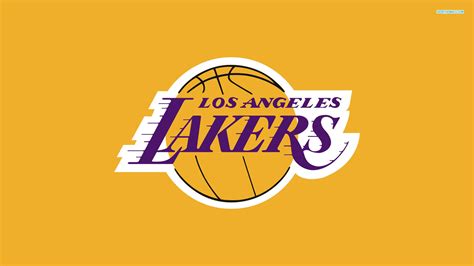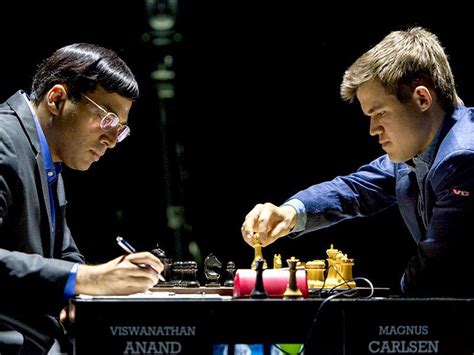
Tony Reali, former host of ESPN’s “Around the Horn,” attributes the show’s cancellation to a confluence of factors, including budget cuts at ESPN, a shift in viewer habits towards streaming content, and the evolution of the sports debate format itself. Reali, in a video interview, explained that the show’s demise wasn’t due to any single catastrophic event but rather a gradual erosion of its relevance in a rapidly changing media landscape. He emphasized the show’s long run and its impact on sports television, while acknowledging the inevitable end.
The End of an Era: Tony Reali on “Around the Horn’s” Sunset
After more than two decades on the air, ESPN’s “Around the Horn” concluded its run, leaving many to question the reasons behind its cancellation. Tony Reali, who served as the show’s host for the majority of its lifespan, shed light on the decision, citing a combination of economic realities and evolving viewership patterns.
Reali explained that the cancellation wasn’t a sudden decision but rather a consequence of the ongoing financial pressures at ESPN. “I think that there’s a number of factors,” Reali stated. “One is just economics. ESPN, like a lot of places, has been hit with changes.” These economic changes have led to widespread budget cuts and a re-evaluation of programming priorities, impacting numerous shows and personalities across the network.
Beyond the financial considerations, Reali pointed to a fundamental shift in how viewers consume sports content. “The way that we consume sports is obviously different,” he noted. The rise of streaming services and on-demand content has fragmented the audience, drawing viewers away from traditional television formats. Shows that once thrived on appointment viewing now struggle to maintain their audience share in a world of personalized streaming experiences. This trend has forced ESPN to adapt its programming strategy, focusing more on digital platforms and targeted content.
The evolution of the sports debate format itself also played a role in “Around the Horn’s” cancellation. The show, which pioneered the use of rapid-fire debate and real-time scoring, helped to shape the landscape of sports television. However, the format has become increasingly saturated, with numerous shows adopting similar approaches. This saturation has made it more difficult for “Around the Horn” to stand out in a crowded field. Reali stated that “the marketplace has changed” in terms of debate style. New shows have brought in different approaches that have captivated the audience.
Reali acknowledged the show’s long and successful run, emphasizing its impact on sports television. “I think that what ‘Around the Horn’ did, it lived a full life,” Reali said. He highlighted the show’s unique format and its ability to showcase a diverse range of voices and perspectives. “Around the Horn” provided a platform for sports journalists and commentators from across the country to share their opinions and engage in lively debates. Its success helped to launch the careers of many prominent figures in the sports media industry.
Despite the cancellation, Reali expressed gratitude for the opportunity to host the show and for the support of its loyal viewers. He recognized that all shows eventually come to an end, and he remained optimistic about the future of sports television. He reflected on his own experience on the show, admitting that its ending was bittersweet but ultimately understandable. Reali ended the interview with positive sentiments, acknowledging the show’s impact and expressing excitement for future endeavors.
The cancellation of “Around the Horn” marks the end of an era in sports television. The show’s innovative format and its commitment to diverse voices helped to shape the landscape of sports debate. While its departure is a loss for many viewers, it also serves as a reminder of the constant evolution of the media industry and the need for networks to adapt to changing consumer habits. ESPN’s decision reflects the complex interplay of economic pressures, technological advancements, and evolving audience preferences that are reshaping the future of television.
In-Depth Analysis of the Factors Leading to Cancellation
To fully comprehend the cancellation of “Around the Horn,” a deeper examination of each contributing factor is essential.
1. Economic Realities at ESPN:
ESPN, while still a dominant force in sports broadcasting, has faced significant financial challenges in recent years. These challenges stem from several sources, including declining cable subscriptions, rising programming costs, and increased competition from streaming services.
- Cord-Cutting: The phenomenon of cord-cutting, where viewers cancel their cable subscriptions in favor of streaming options, has had a profound impact on ESPN’s revenue. As fewer people subscribe to cable, ESPN receives less revenue from subscriber fees, which are a major source of its income. This decline in revenue has forced ESPN to make difficult decisions about its programming and staffing.
- Programming Costs: The cost of acquiring the rights to broadcast live sports events has skyrocketed in recent years. ESPN pays billions of dollars to leagues such as the NFL, NBA, and MLB for the rights to broadcast their games. These high costs put a strain on ESPN’s budget and limit its ability to invest in other areas of programming.
- Competition from Streaming Services: The rise of streaming services such as Netflix, Amazon Prime Video, and Disney+ has intensified competition for viewers. These services offer a wide range of entertainment options, including sports-related content, at competitive prices. This competition has made it more difficult for ESPN to attract and retain viewers.
In response to these economic challenges, ESPN has implemented a series of cost-cutting measures, including layoffs, salary reductions, and the cancellation of underperforming shows. “Around the Horn,” while a long-running and respected program, likely fell victim to these budgetary constraints. It is possible that the show’s production costs, combined with its declining viewership, made it a target for cancellation.
2. Shifting Viewership Patterns:
The way that people consume sports content has undergone a dramatic transformation in recent years. Traditional television formats are losing ground to streaming services, on-demand content, and social media platforms.
- Rise of Streaming: Streaming services offer viewers greater flexibility and control over their viewing experience. Viewers can watch content on their own schedule, on any device, and without the need for a cable subscription. This convenience has made streaming services increasingly popular, particularly among younger viewers.
- On-Demand Content: On-demand content allows viewers to watch sports highlights, analysis, and documentaries whenever they want. This eliminates the need to tune in to live broadcasts or scheduled programs. ESPN itself has invested heavily in on-demand content through its ESPN+ streaming service.
- Social Media: Social media platforms such as Twitter, Facebook, and Instagram have become important sources of sports news and highlights. Many fans now follow their favorite teams and athletes on social media and consume sports content through these platforms.
These shifting viewership patterns have had a direct impact on the audience for “Around the Horn.” The show’s traditional format, which relied on appointment viewing, struggled to compete with the convenience and flexibility of streaming and on-demand content. As younger viewers increasingly turn to digital platforms for their sports content, the audience for “Around the Horn” likely declined, making it a less attractive option for ESPN.
3. Evolution of the Sports Debate Format:
“Around the Horn” was a pioneer in the sports debate format, introducing a unique and innovative approach to sports television. However, the format has become increasingly saturated, with numerous shows adopting similar approaches.
- Proliferation of Debate Shows: The success of “Around the Horn” spawned a wave of sports debate shows, each vying for a share of the audience. These shows often feature similar formats, personalities, and topics, making it difficult for any one show to stand out.
- Emphasis on Hot Takes: Many sports debate shows have adopted a strategy of emphasizing “hot takes” and controversial opinions in order to generate attention and attract viewers. This can lead to a focus on sensationalism and negativity, which may alienate some viewers.
- Changing Preferences: Viewer preferences for sports debate shows have evolved over time. Some viewers may prefer more in-depth analysis and thoughtful discussion, while others may prefer more entertaining and provocative debates.
The evolution of the sports debate format has made it more difficult for “Around the Horn” to maintain its relevance. The show’s format, while still engaging, may have become less appealing to viewers who have grown accustomed to more sensational or in-depth approaches. The saturation of the market also made it harder to differentiate “Around the Horn” from its competitors.
The Legacy of “Around the Horn”
Despite its cancellation, “Around the Horn” leaves behind a significant legacy in sports television. The show’s innovative format, its commitment to diverse voices, and its impact on the careers of many prominent figures in the sports media industry have all contributed to its lasting influence.
- Innovative Format: “Around the Horn” introduced a unique format that combined rapid-fire debate with real-time scoring. This format was both engaging and informative, and it helped to shape the landscape of sports television. The show’s use of technology, such as the “Mute Button,” added a layer of humor and interactivity that resonated with viewers.
- Diverse Voices: “Around the Horn” provided a platform for a diverse range of voices and perspectives. The show featured panelists from across the country, representing different backgrounds, experiences, and viewpoints. This diversity helped to broaden the scope of sports debate and make it more inclusive.
- Career Launching Pad: “Around the Horn” helped to launch the careers of many prominent figures in the sports media industry. Many of the show’s panelists went on to achieve success as commentators, analysts, and writers. The show provided them with valuable exposure and experience that helped them to advance their careers.
“Around the Horn” will be remembered as a pioneering and influential program that helped to shape the landscape of sports television. Its legacy will continue to inspire and inform future generations of sports journalists and commentators.
ESPN’s Strategic Shift
The cancellation of “Around the Horn” also reflects a broader strategic shift at ESPN, driven by the changing media landscape. ESPN is increasingly focused on digital platforms, on-demand content, and personalized viewing experiences.
- ESPN+: ESPN has invested heavily in its ESPN+ streaming service, which offers a wide range of live sports, original programming, and on-demand content. ESPN+ is seen as a key component of ESPN’s future strategy, as it allows the network to reach viewers who are not subscribing to traditional cable.
- Digital Content: ESPN is also investing in digital content, such as articles, videos, and podcasts, that can be consumed on a variety of platforms. This allows ESPN to reach viewers who are spending more time online and less time watching traditional television.
- Personalized Experiences: ESPN is working to create more personalized viewing experiences for its viewers. This includes offering customized content recommendations, allowing viewers to track their favorite teams and athletes, and providing interactive features that enhance the viewing experience.
The cancellation of “Around the Horn” is a sign that ESPN is prioritizing these new strategic initiatives. The network is likely to focus its resources on programs and content that are more aligned with its digital and on-demand strategy.
The Future of Sports Television
The cancellation of “Around the Horn” raises questions about the future of sports television. As the media landscape continues to evolve, what types of programs and formats will thrive?
- Live Sports: Live sports will likely remain a cornerstone of sports television, as they offer a unique and compelling viewing experience. However, the way that live sports are consumed is likely to change, with more viewers tuning in through streaming services and on-demand platforms.
- Short-Form Content: Short-form content, such as highlights, clips, and analysis videos, is likely to become increasingly popular. This type of content is easy to consume on mobile devices and social media platforms, making it ideal for younger viewers.
- Interactive Experiences: Interactive experiences, such as live chats, polls, and fantasy sports integration, are likely to enhance the viewing experience and make it more engaging. These features can help to create a sense of community and make viewers feel more connected to the games and the athletes.
- Niche Programming: Niche programming, which caters to specific interests and demographics, is likely to grow in popularity. This type of programming can attract dedicated viewers who are passionate about a particular sport, team, or athlete.
The future of sports television is likely to be characterized by greater choice, flexibility, and personalization. Viewers will have more control over what they watch, when they watch it, and how they watch it. Networks that can adapt to these changing preferences will be best positioned to succeed.
Conclusion
The cancellation of “Around the Horn” is a complex issue with multiple contributing factors. Economic pressures at ESPN, shifting viewership patterns, and the evolution of the sports debate format all played a role in the show’s demise. While the cancellation is a loss for many viewers, it also represents an opportunity for ESPN to adapt to the changing media landscape and invest in new programming and content. “Around the Horn” leaves behind a significant legacy in sports television, and its influence will continue to be felt for years to come. As the industry evolves, networks must continue to innovate and adapt to meet the changing needs and preferences of viewers. The story of “Around the Horn” serves as a case study of the volatility and dynamism of sports broadcasting in the 21st century. The show was successful and long-lived, but ultimately could not overcome the economic and viewership trends that are transforming the media world. Only time will tell what innovative formats and personalities will emerge to fill the void left by its departure.
Frequently Asked Questions (FAQ)
1. Why was “Around the Horn” cancelled?
The cancellation of “Around the Horn” was due to a combination of factors, including budget cuts at ESPN, a shift in viewer habits towards streaming content, and the evolution of the sports debate format. ESPN, like many media companies, has been facing economic pressures from cord-cutting and rising programming costs. The show’s format, while once innovative, had also become saturated in the market, making it harder to stand out.
2. What does Tony Reali say about the cancellation?
Tony Reali, the former host of “Around the Horn,” acknowledged that the show’s cancellation was a result of several converging factors, primarily economics at ESPN and changing consumption habits. He noted that the show had a long and successful run, but the marketplace has changed and the way people consume sports content has evolved. He also expressed gratitude for his time on the show and its impact on his career.
3. How long was “Around the Horn” on the air?
“Around the Horn” was on the air for more than two decades. Its long run solidified its place in sports television history and allowed it to influence the careers of many sports journalists and commentators.
4. Will Tony Reali be staying with ESPN?
The original source does not explicitly address whether Tony Reali will be staying with ESPN. It primarily focuses on his perspective on the show’s cancellation and his reflections on its legacy. Further information would be needed to confirm his future plans with the network.
5. What impact did “Around the Horn” have on sports television?
“Around the Horn” had a significant impact on sports television. It pioneered the rapid-fire debate format with real-time scoring, which influenced many subsequent sports debate shows. It also provided a platform for diverse voices and helped launch the careers of many prominent figures in the sports media industry. The show’s commitment to showcasing a variety of perspectives contributed to a more inclusive and engaging sports debate landscape.









